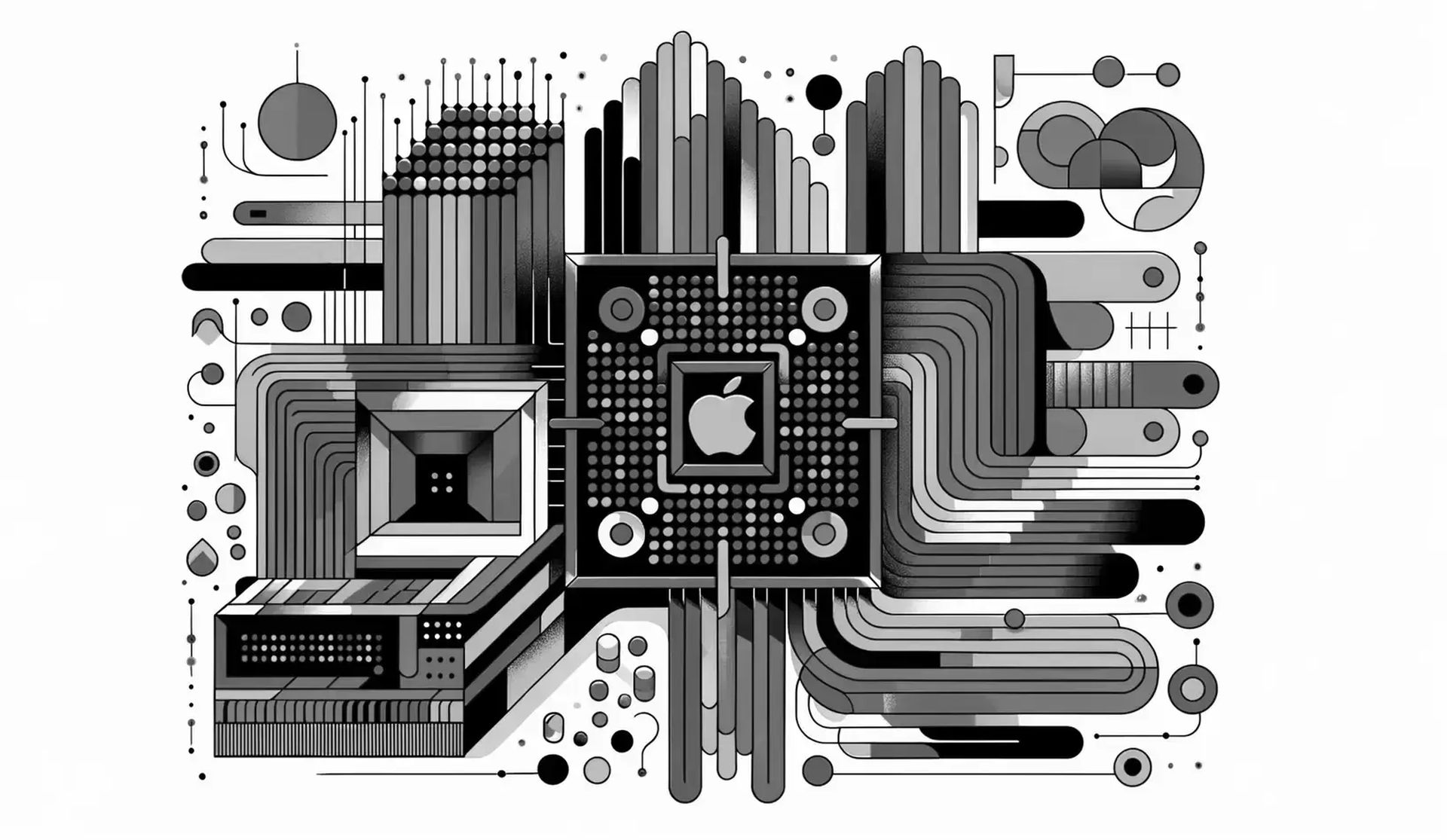What Is Dynamic Caching, M3 Chip’s Prowess
Apple has once again poised itself at the cusp of innovation with the introduction of Dynamic Caching in its M3 series chips. This novel feature is not merely a fleeting stride but a monumental leap in GPU architecture. The audacity of Apple to continuously redefine the graphics processing narrative is clearly embodied in Dynamic Caching, marking a significant epoch in real-time memory allocation which is the bedrock of this new feature.
Dynamic Caching explained
Dynamic Caching is a groundbreaking feature introduced in Apple’s M3 series chips, aimed at optimizing GPU performance. Unlike traditional GPUs with static memory allocation, Dynamic Caching allows real-time allocation of local memory in hardware, ensuring only the necessary amount of memory is used for each task.
Traditionally, GPUs have a preset memory allocation, which although efficient, often falls short in adapting to the real-time demands of various tasks. This rigidity in memory allocation has been a bottleneck in harnessing the full potential of GPU capabilities. Enter Dynamic Caching, a feature that transcends this limitation by orchestrating real-time allocation of local memory in hardware, ensuring that only the requisite amount of memory is utilized for each task. This modus operandi not only optimizes memory usage but also sets the stage for a considerable augmentation in graphics performance.
Apple bets big on AI with M3 chip series
Apple’s M3 chips, embedded with Dynamic Caching, are engineered to deliver a quantum leap in graphics performance. This feature is a linchpin in distinguishing the M3 chips, propelling them into a league of their own. The real genius of Dynamic Caching lies in its seamless operation, a facet that is transparent to developers, thereby not necessitating a steep learning curve to leverage this feature. This is an epoch-making stride as it embodies a paradigm shift in how memory allocation is orchestrated in GPUs.
Real-time memory allocation
The traditional memory allocation in GPUs has been largely static, with predetermined memory spaces assigned for tasks. This static nature often posed constraints, especially when dealing with a diverse array of tasks with varying memory demands. The innovation of Dynamic Caching is a clarion call to this long-standing challenge. By enabling real-time memory allocation in hardware, Dynamic Caching ensures that only the exact quantum of memory needed is earmarked for each task. This dynamic allocation is a stark departure from the conventional frameworks, ushering in a new era of memory management in GPUs.
The genius of Dynamic Caching lies in its ability to judiciously allocate memory in real-time without any requisite input from developers. This level of automation not only simplifies the memory management paradigm but also significantly optimizes the utilization of memory resources. By ensuring that no memory is squandered, Dynamic Caching contributes to a more efficient and performant GPU architecture. The cornerstone of this feature is its transparency to developers, which means that while the GPU is tirelessly optimizing memory allocation, developers can remain focused on crafting superior graphical experiences without being bogged down by memory management intricacies.

Enhanced graphics performance
The bedrock of an exemplary graphical experience is rooted in the performance of the GPU. With Dynamic Caching, Apple’s M3 chips are not just keeping up with the status quo but are setting a new performance narrative. The Dynamic Caching feature serves as the linchpin in drastically enhancing the graphics performance of the M3 chips. By ensuring that memory is optimally utilized and not squandered, Dynamic Caching contributes to a more streamlined and efficient processing, which in turn translates to enhanced graphics performance.
The leap in graphics performance is not just a marginal increment, but a significant uplift. This is particularly pronounced in applications and scenarios that are heavily reliant on superior graphics performance. The real-time memory allocation facilitated by Dynamic Caching ensures that the GPU is always operating at its optimum, thus delivering a superior graphical output.
This feature is emblematic of Apple’s commitment to pushing the envelope in GPU technology, ensuring that users and developers alike have access to unrivaled graphics performance that sets a new industry benchmark.
Performance and efficiency improvements
Dynamic Caching represents a critical juncture in bolstering both performance and efficiency across a myriad of applications. By orchestrating memory allocation meticulously, it ensures optimal resource utilization which, in turn, translates to faster processing and reduced energy consumption.
This is imperative in a world where battery longevity and system responsiveness are paramount. The ripple effect of this optimization extends beyond just individual tasks, contributing to an overall enhanced system performance, marking a significant stride in GPU technology evolution.

Impact on developers and applications
The advent of Dynamic Caching is poised to redefine how developers interact with the Mac’s GPU. This feature presents a new horizon for developers to potentially enhance the graphical prowess and efficiency of their applications.
The transparency of Dynamic Caching means developers can remain focused on innovating within their applications, without being mired in the intricacies of memory management. Moreover, the ripple effects extend to end-users who are likely to experience enriched graphical interfaces and faster, more efficient applications, marking a win-win scenario in the ecosystem.
Innovation in GPU architecture
Dynamic Caching is emblematic of Apple’s ceaseless endeavor to innovate in the GPU architecture space. By embedding this feature in the latest M series chips – M3, M3 Pro, and M3 Max, Apple underscores its commitment to delivering a groundbreaking GPU experience.
The fusion of Dynamic Caching with the robust M3 chips architecture epitomizes Apple’s forward-thinking approach in GPU design, potentially setting new paradigms in graphics processing. This innovation is not just a fleeting stride, but a substantial leap, paving the way for future advancements in GPU technology, solidifying Apple’s position at the forefront of GPU innovation.
Featured image credit: Kerem Gülen/DALL-E 3
#Dynamic #Caching #Chips #Prowess
